GAZ-A

The very first car manufactured by GAZ. A copy of 1930 Ford Model A Standard Phaeton (35B) that was produced under license in 1932-1936. 41,917 made.
GAZ M-1 & GAZ-11-73 / M-11
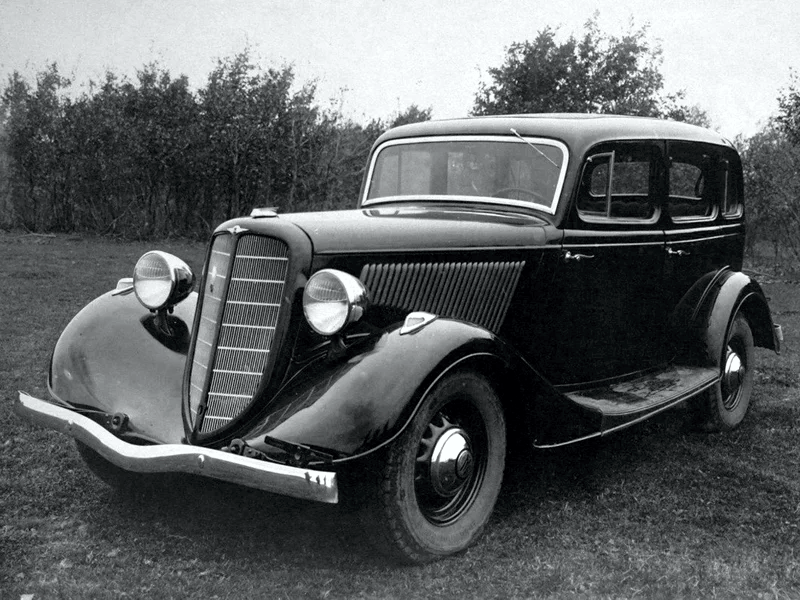
This GAZ model was once again based on a Ford car – Ford Model B Fordor Sedan (40A), blueprints being provided by FoMoCo in accordance with the terms of the original 10-year contract. However, this time significant modifications were made to the original American design.
Chassis was reinforced by adding a massive X-shaped cross member, as well as many other reinforcements, to the frame. Front and rear suspensions were designed completely from scratch, with four longitudinal leaf springs replacing Ford’s trademark transverse leaf spring design. Braking system linkages had to be redesigned, as well. Engine and transmission were for the most part straight copies of Ford units. Body was very similar, but front fenders had a slightly different shape and trim was slightly altered.
62,888 cars were built in 1936-1938.
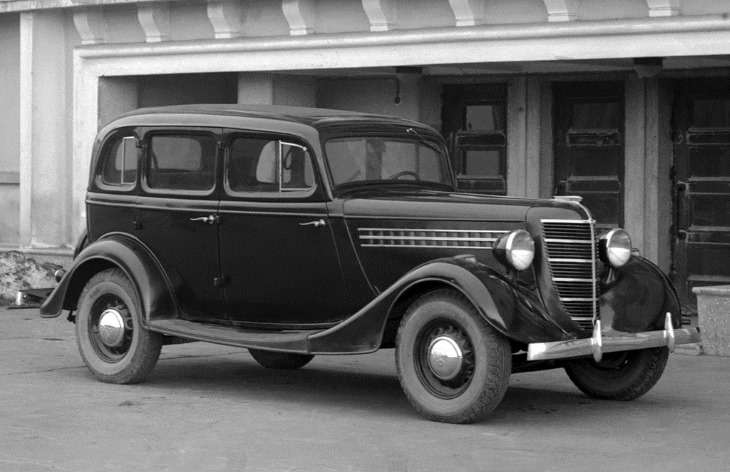
GAZ-11-73 (M-11) was an improved version of the M-1 that was produced in 1938-1942 and again in 1945-1946. The most significant update was the new engine designated GAZ-11 – a 3485 cc flathead inline six based on the 218 cu. in. Chrysler flathead six. Externally, GAZ-11-73 was distinguished by a more streamlined radiator shell.
Only 1,140 cars were built, most of them after the end of WWII.
A four-wheel drive version designated GAZ-61-73 was produced before and during the war in very small quantity (181 car).
Pobyeda M-20 / GAZ-20
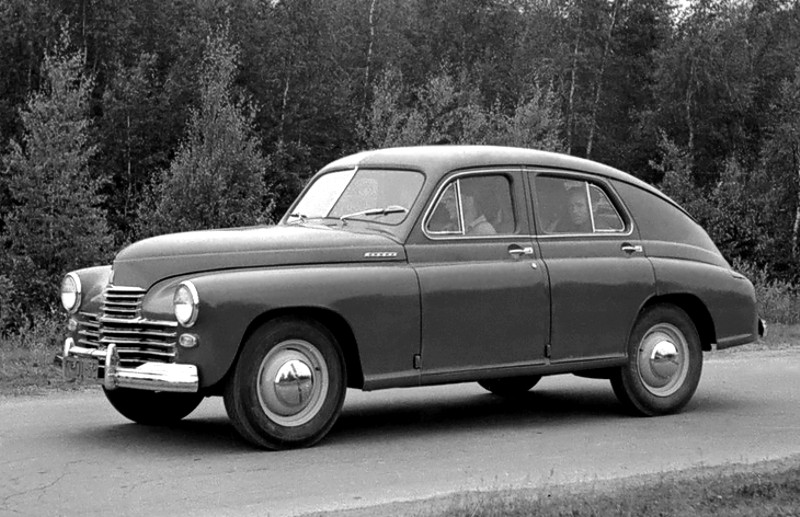
The first postwar model of the plant that entered production for the first time in 1946, and, after a year-long pause, again in the fall of 1949.
GAZ had been working on a modern replacement for the current car model starting in 1938, but the development process was severely hampered by the war with Finland, and completely interrupted with the beginning of the Great Patriotic War. The project was revitalized only in 1943, soon after the Battle of Stalingrad.
To make up the leeway, German built Opel Kapitän model was reverse engineered and its floor pan and front suspension were used extensively as prototypes for corresponding parts of the Pobyeda’s unitized body and chassis.
On the other hand, a lot of elements were carried over from previous GAZ models, and not all of them looked quite satisfactory in a modern car, such as the archaic non-synchromesh three-speed transmission with a floor shifter (later it was substituted with a more modern one, with synchromesh on II and III gears and a column shifter), or the non-hypoid rear axle with a split three-piece housing and spiral bevel gears, which was based on the rear axle of GAZ-67 off-road vehicle and had an ancestry that could be traced all the way back to the Ford Model A axle.
The 2.1 L side-valve four-cylinder engine was a derivative of the six-cylinder GAZ-11 (with two cylinders “sawed off”), but, unlike the latter, had symmetrical connecting rods.
Exterior design was based on the prewar ideas of what a car of near future would look like, and, being quite modern for 1946, it didn’t age well as the American automotive styling went on and on in late 1940s and early 50s, soon making the slab-sided fastback sedan look unexciting and outdated.
Nonetheless, the car was produced until 1958 and very well-liked, becoming synonymous with automotive sturdiness and durability, though probably not beauty. 241,497 built.
M-72
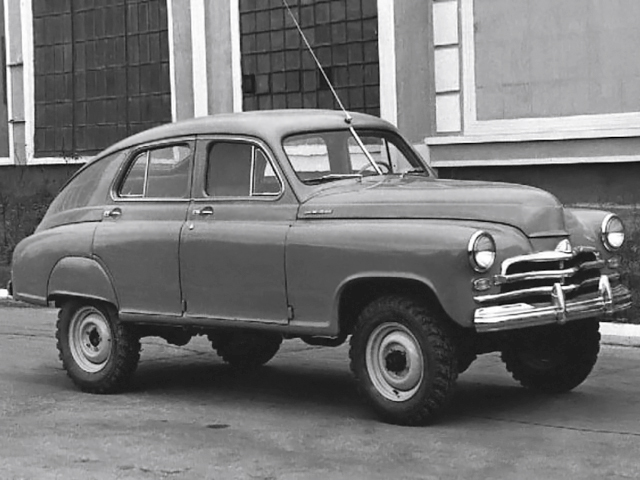
M-72 was a four-wheel drive version of the Pobyeda that also shared a lot of parts with GAZ-69 light truck. Unitized body was retained (with significant reinforcements), just as the engine and gearbox unit, but a transfer case was added to the transmission (part-time four-wheel drive only). Front axle was a shortened version of GAZ-69 unit, and rear axle was developed from scratch for this car.
4,677 were built in 1955-1958. Officially, this car never bore the Pobyeda name – just the alphanumeric designation (the only reason why it has a separate section here).
ZIM / GAZ-12
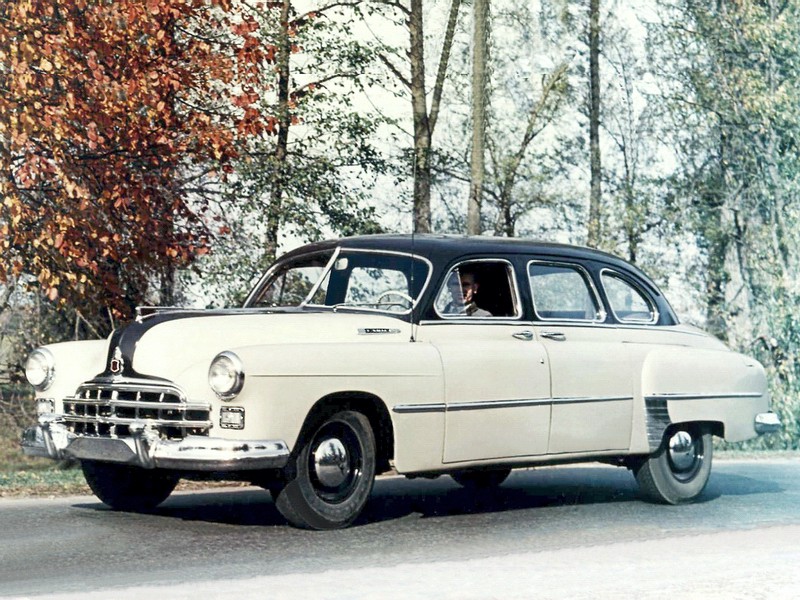
Essentially a larger version of the Pobyeda platform with three rows of seats, a six-cylinder engine and Fluid-Drive type hydraulic coupling in the transmission. ZIM is an abbreviation that means “Molotov’s Name Plant” (a strange name for a car, even for native Russian speakers).
In 1949-1960, 21,527 were made. Some were used by the taxicab service or as ambulances, but most were official cars for various medium-rank bureaucrats (junior minister or regional Party Committee Secretary level; one step up from the Pobyeda, one step down from the ZIS / ZIL). Substantial number of these cars was also sold to private owners, both new and used (especially during the Khrushchev Thaw, when a lot of these cars which previously had been used by low-ranking officials were transferred into taxicab fleets or sold into private hands).
Volga M-21 / GAZ-21, GAZ-22, GAZ-23
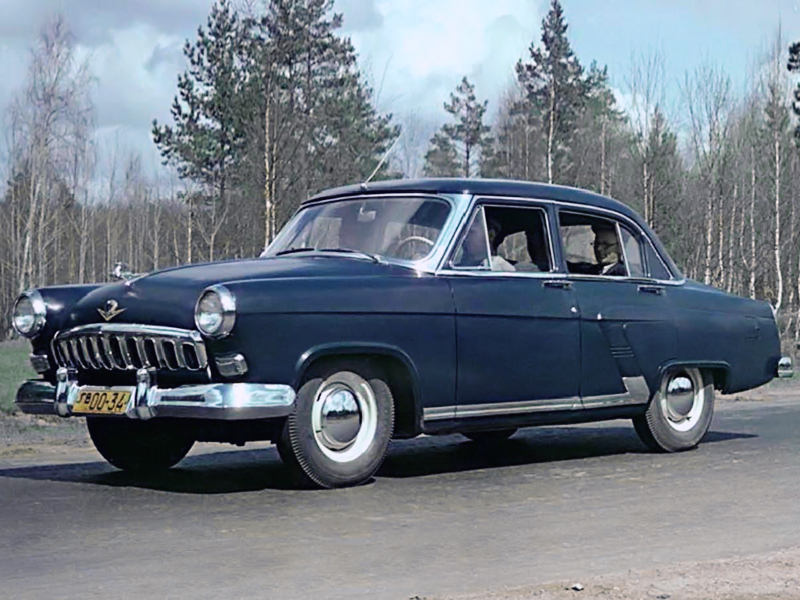
This model was built from 1956 to 1970, immediately previous to GAZ-24, with some overlap in 1967-1970.
The initial version of the chassis had been for the most part carried over from the Pobyeda, but it was redesigned later in early 1960s, getting rid of many outdated elements such as lever action-type shock absorbers.
The engine, on the other hand, was completely new – a 2.5 L overhead-valve aluminum inline-four designed by Harry Ewart. Automatic transmission was offered for several years, but after 1959 almost all automatic gearboxes manufactured by GAZ were used in the production of GAZ-13 Chayka, leaving the Volga with a three-speed manual as the only option. Most cars produced had hypoid gear rear axle.
Styled by Leo Yeremeyev, it is often considered to be one of the best-looking Soviet cars and is massively popular among classic car aficionados. 638,875 cars of this model were manufactured by GAZ (including GAZ-22).
GAZ-22 was the station wagon version, and GAZ-23 was equipped with a 5.5L V8 and automatic transmission (603 built).
GAZ-13 Chayka
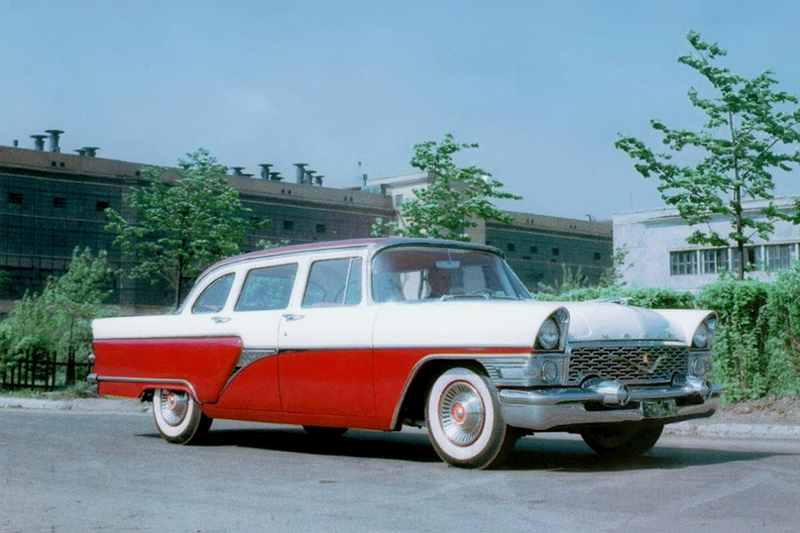
The latest and most advanced GAZ car by the time when the development of GAZ-24 started. GAZ-24 had been conceived as a scaled-down version of the Chayka chassis, and, although the idea of using body-on-frame design for a medium-sized car was abandoned later, many technical elements of this initial version were retained, such as a very similar front suspension and steering gear design (some parts are even interchangeable).
5.5 L aluminum V8 and push-button controlled automatic transmission were standard equipment, just as power brakes, power steering and power windows. Body was mounted on a cruciform type frame.
Styling was mostly reminiscent of 1957 model year General Motors cars, with some touches of ’55 – ’56 Packards and various Lincolns.
Chaykas with personal drivers were provided by the Soviet State as a benefit in addition to wages to the high-ranking officials (junior minister level), in theory – strictly for the trips that related to their job. These cars, unlike the previous model, were never ever sold into private hands.
The GAZ-13 Chayka stayed in production for an unusually long time, even for the Soviet automotive industry, however very few cars were assembled each year, for a total of only 3,179 made between 1959 and 1981.
